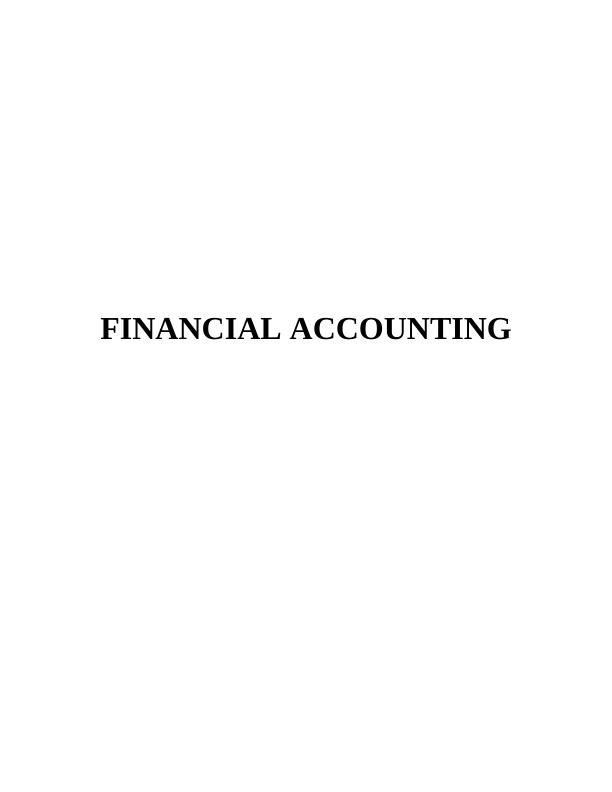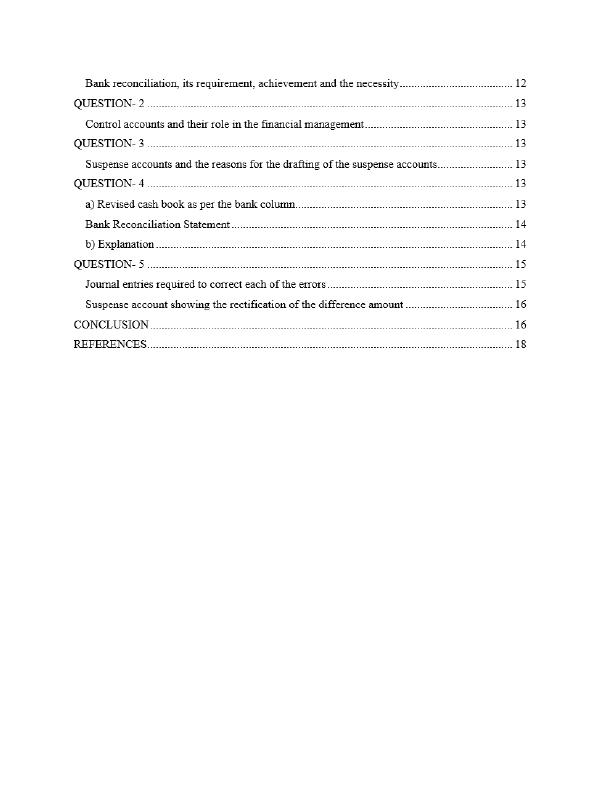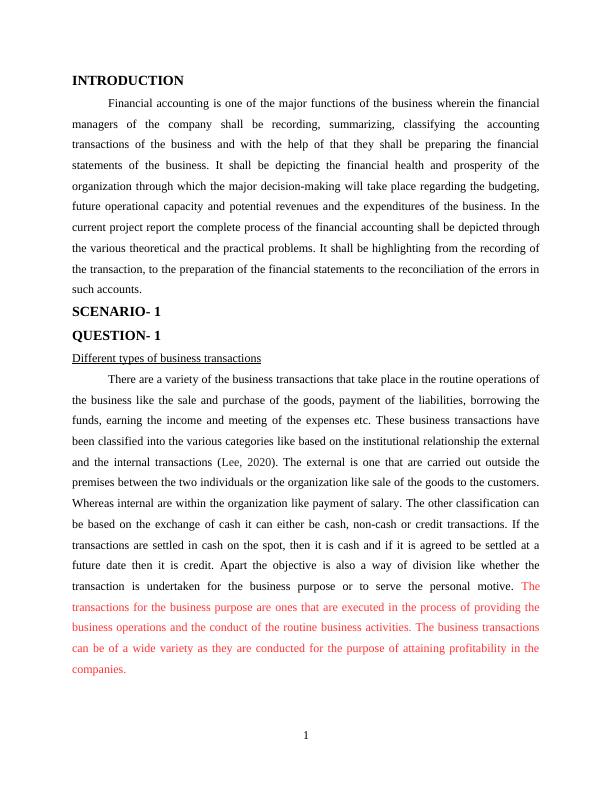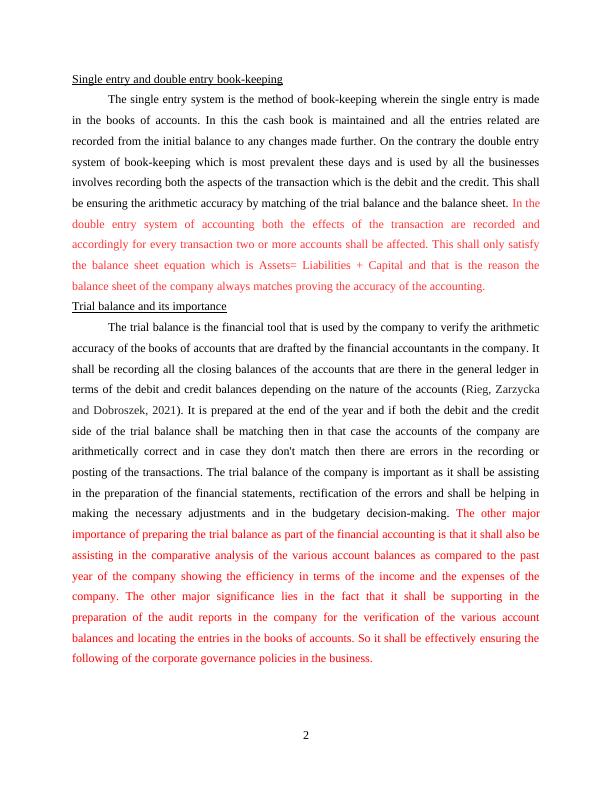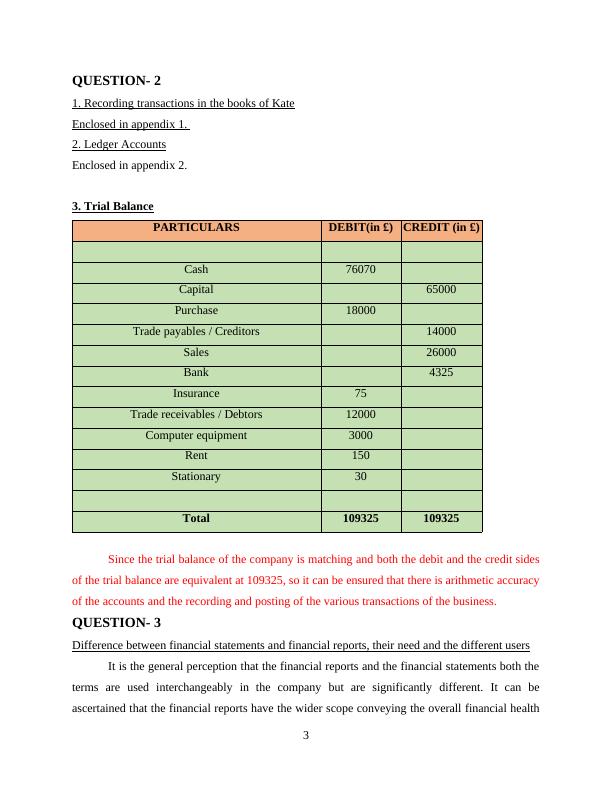Financial Accounting: Functions, Transactions, Principles, Statements
Record business transactions using double entry book-keeping, prepare final accounts, perform reconciliations, and apply management accounting techniques.
26 Pages4522 Words457 Views
Added on 2022-11-29
About This Document
This document provides an introduction to financial accounting and covers topics such as types of business transactions, single and double entry bookkeeping, trial balance, financial statements, fundamental principles of accounting, and preparation of income statement, balance sheet, and cash flow statement.
Financial Accounting: Functions, Transactions, Principles, Statements
Record business transactions using double entry book-keeping, prepare final accounts, perform reconciliations, and apply management accounting techniques.
Added on 2022-11-29
ShareRelated Documents
End of preview
Want to access all the pages? Upload your documents or become a member.
Accounting: Introduction, Business Transactions, Financial Statements, Principles
|20
|4222
|339
Financial Accounting: Transactions, Bookkeeping, Trial Balance, Financial Statements
|21
|4108
|24
Financial Accounting: Transactions, Bookkeeping, Journal Entries, Financial Reports, Principles
|25
|4870
|184
Financial Accounting: Introduction, Scenarios, and Concepts
|22
|4853
|86
Financial Accounting: Types of Transactions, Principles, and Statements
|28
|4619
|66
Financial Accounting: Types of Transactions, Bookkeeping, Trial Balance
|22
|4322
|2

